Illinois Crop Update – May 9, 2025
Kathryn Seebruck – Commercial Agriculture Educator
Ogle County
Soil Conditions: Mildly Dry (soil is drier than normal, plant growth may have slowed)
Northwestern Illinois is in the home stretch of planting. I’ve been able to row quite a few corn fields, and beans have been reported as being up and out of the ground or just about. There are few fields that have yet to be planted.
Weeds such as giant ragweed and common lambsquarters are present in fields I’ve been in, and in one field that had not been worked yet, I saw the invasive weed poison hemlock, which was also present in the adjacent ditch. This serves as a reminder to maintain edge-of-field areas, as they can serve as entry points for invasive species.
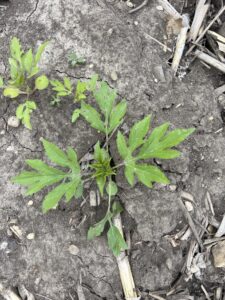
Figure 1: Giant ragweed seedling

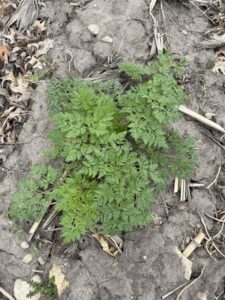
Figure 3: Poison hemlock
Emily Hansen – Commercial Agriculture Educator
LaSalle County
Soil Conditions: Mildly Wet (soil is wetter than normal, local vegetation is healthy)
Rain the last few weeks has limited activity in many parts of LaSalle County, but this week it has dried out a bit and we’ve had perfect weather for planting. Most have completed any planned spring tillage, and since Monday (5/5/25) I have seen many planters/sprayers out in the fields. The research and demonstration plots at Illinois Valley Community College will be planted this Friday (5/9/25). I anticipate many growers will be taking advantage of the sunny, warm weather in the forecast for the next week to finish planting.
Steve Brand– Commercial Agriculture Specialist
Grundy and DeKalb Counties
Soil Conditions: Mildly Wet (soil is wetter than normal, local vegetation is healthy)
After a wet and cool end of April in Northern IL planting is beginning to ramp up significantly this week. Temps are predicted to be in the 70’s and 80’s moving into next week and planted crops will begin to emerge quickly. As I traveled the Northern corridor in Dekalb county many fields remain to be planted. By early afternoon on Tuesday May 6th many fields were drying out and field tillage followed by planting was occurring. With a warm and dry outlook to finish the week and into the weekend planting conditions will be ideal to get acres in the ground for corn and soy.
Very few fields had emerged for corn and were around 1 inch tall and V2 or just spiking. I did not see any soybeans emerging quite yet but should start to break through by the end of the week. Wheat in McHenry County was around Feekes 8 with multiple nodes showing on the plants, and was around 8 inches tall with very healthy stands.
In Morris IL conditions were a bit drier and planting was not delayed. Corn was emerging in numerous fields and was around 1-2 inches tall and V2. The corn was somewhat yellow in color from lack on sunshine since emergence but should recover with the predicted forecast calling for sunshine and warmer temperatures. Soybeans were emerging near Morris as well with 1 trifoliate in fields where they emerged. Planting will continue this week for both corn and soy as field conditions will be ideal.
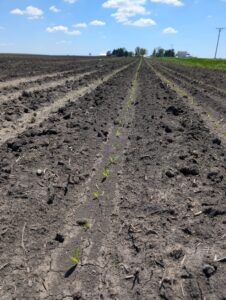
Figure 4: Corn Emerging in Dekalb county. Very few fields emerged, V2 at latest
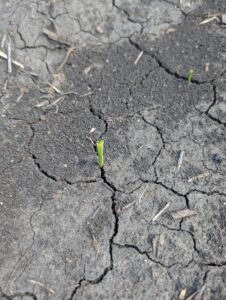
Figure 5: Corn is beginning to spike north of Sycamore IL, very few fields have emerged

Figure 6: Wheat is around Feekes 8 near Marengo IL, 2nd node visible and plants about 8 inches tall
Russ Higgins – Commercial Agriculture Educator
Grundy County
Soil Conditions: Mildly Wet (soil is wetter than normal, local vegetation is healthy)
Planting has resumed in Northeast Illinois after recent precipitation. Nearly ideal field conditions early to mid-April allowed for an early start to the planting season. Windshield surveys suggest a growing number of area farmers planted some, if not all, soy before corn. Corn that emerged are demonstrating a yellowish cast, the result of earlier cloudy and cool days. A reminder that seedling corn is still largely dependent upon kernel reserves. Once corn reaches the V3 growth stage, seedlings begin the transition to being dependent upon the nodal root system. The cure for the discolored corn, warmer and more cloudless days. For those with alfalfa, just as last year, alfalfa weevil is prevalent in area fields. If the alfalfa has reached 16 inches in height, taking the first cutting is often the preferred management tool for the pest over an insecticide application. Harvesting the alfalfa removes food and shelter and exposes larvae to harmful UV rays. Regrowth in heavily populated weevil fields should be monitored.
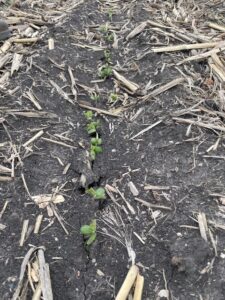
Figure 7: May 5, 2025, Grundy County – Emerging Soy
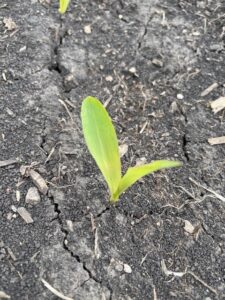
Figure 8: May 5, 2025, Grundy County – Yellowish Corn
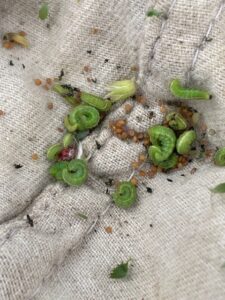
Figure 9: May 5, 2025, Grundy County – Alfalfa Weevil Larvae
Meagan Diss – Commercial Agriculture Specialist
Warren County
Soil Conditions: Near Normal
Planting is in full swing with some farmers nearing the end. Sprayers and planters are rolling along. Weather conditions have been pretty favorable for May thus far. For fields that were first planted, we’re starting to see some good emergence. Looks like the remainder of the week will be favorable for continued planting.
Reagan Tibbs – Commercial Agriculture Educator
Logan County
Soil Conditions: Near Normal
Planting continues to roll at a steady pace across Logan, Menard, and Sangamon counties. While there has been no rain since this past weekend, there is still ample moisture a few inches beneath the soil surface. Warm temps and scant chances of rain in the forecast will help producers finish planting. Of the corn and soybeans that have emerged, nearly all are in the VE stage.
Talon Becker – Commercial Agriculture Specialist
Champaign County
Soil Conditions: Moderately Wet (soil is damp, standing water may be present in low areas, water bodies are full)
Although planting progress has stalled in Champaign County recently, the crop that was planted before the recent bout of rainstorms is emerging. From my survey in the southern half of Champaign County on May 6, many of the higher and dryer fields I observed had been planted with the crop emerged in perhaps 30-40% of those fields. However, many of the fields in that portion of the county remained unplanted at the time of my survey due to the moderately wet soil conditions. Standing water was present in a few field corners/headlands, but this ponding was not widespread across large portions of fields. With warmer, dryer weather in the forecast for this week and next, I suspect many farmers will make quite a bit of progress over the next 7-10 days. The couple wheat fields I found during my survey were both at boot stage and looking healthy so far. Most of the cover cropped and/or no-till fields I observed had received their burndown applications, with the exception of one cereal rye field that was headed out but not quite at anthesis.
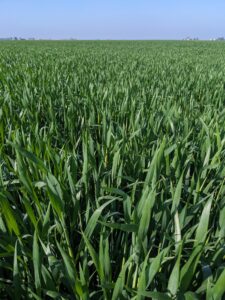
Figure 10: Champaign County, May 6, 2025 – Wheat at boot stage (Feekes 10) with grain heads beginning to emerge.

Figure 11: Champaign County, May 6, 2025 – Fields with corn (left) at V1/V2 and soybeans (right) at VC growth stages.
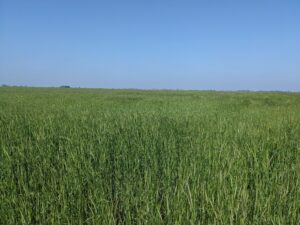
Figure 12: Champaign County, May 6, 2025 – Field with cereal rye cover crop not yet terminated for spring cash crop planting.
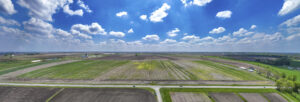
Figure 13: Champaign County, May 7, 2025 – Drone image overlooking the Farm of the Future site on the UIUC campus where different methods of autonomous cover crop seeding into standing cash crops are being tested (photo credit: Jim Baltz – farmdoc web team).
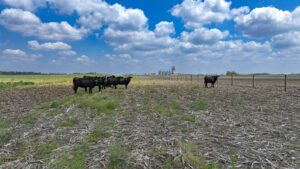
Figure 14: Champaign County, May 7, 2025 – Cattle recently turned out to graze cover crop at the Farm of the Future site on the UIUC campus (photo credit: Jim Baltz – farmdoc web team).
Nick Seiter – Extension Field Crops Entomologist
Champaign County
Soil Conditions: Moderately Wet (soil is damp, standing water may be present in low areas, water bodies are full)
This is a good time to scout for seedling pests, particularly in fields that have been slow to emerge/develop – as we get into warmer weather over the next couple of weeks, plants can outgrow a lot of seedling insect problems. So far, I’ve only received a smattering of reports.
Doug Gucker – Local Food Systems and Small Farms Educator
Dewitt, Macon, and Piatt County
Soil Conditions: Moderately Wet (soil is damp, standing water may be present in low areas, water bodies are full)
Early planted corn and soybean plants have emerged. Corn is in the 2-leaf stage, nearing the 3-leaf stage. Soybean plants are in the unifoliate stage with their first trifoliates developing. Surveyed 200 fields across my 3-county area, and approximately 75% of the fields are planted. Planting progress did vary widely from 30 to 100% complete due the spotty nature of this spring’s rains.
Ponding is evident in fields where the heavier May 3 rains fell. My Black Cutworm monitoring, according to the IL Natural History Survey, predicts that feeding damage may become evident around the Memorial Day weekend.

Figure 15: Corn plants at the 2-leaf stage that were planted on April 13
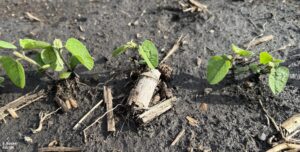
Figure 16: Soybean plants at the uni-foliate stage were planted on April 13.
Dane Hunter – Commercial Agricultural Specialist
Marion County
Soil Conditions: Severely Wet (ground is saturated, standing water is abundant, flooding may be present)
It’s been wet. There were a couple of breaks in the rain long enough for anhydrous and burndowns to be applied, even a little early tillage, but no planting activity as far as I’ve seen. The wheat looks decent considering the 15+ inches of rain that have fallen since April 1st. In the last week, the wheat has headed out and started to flower.





